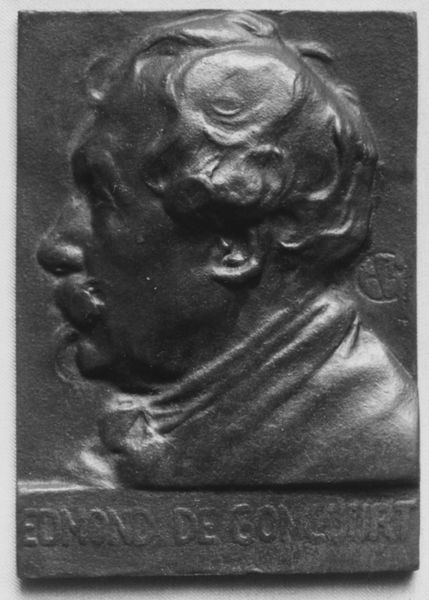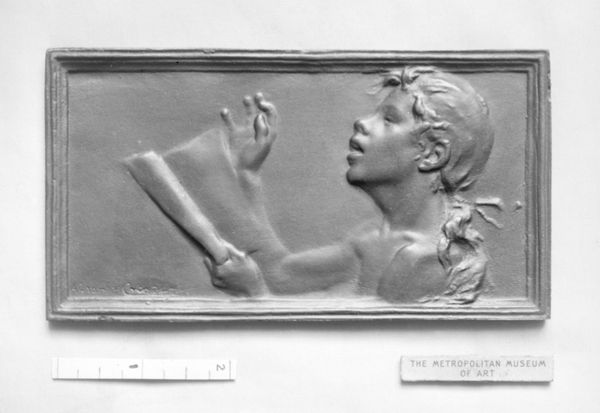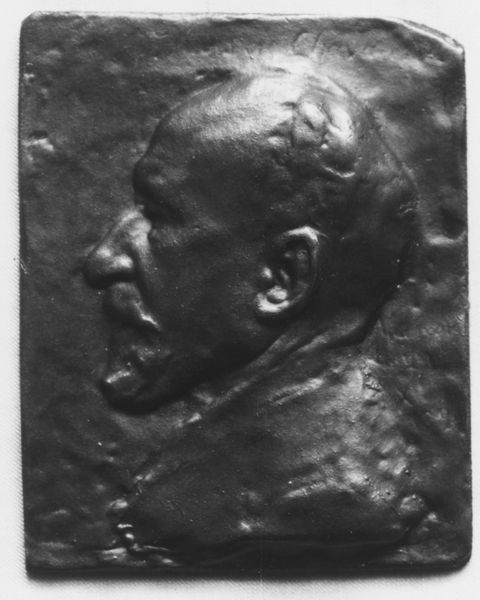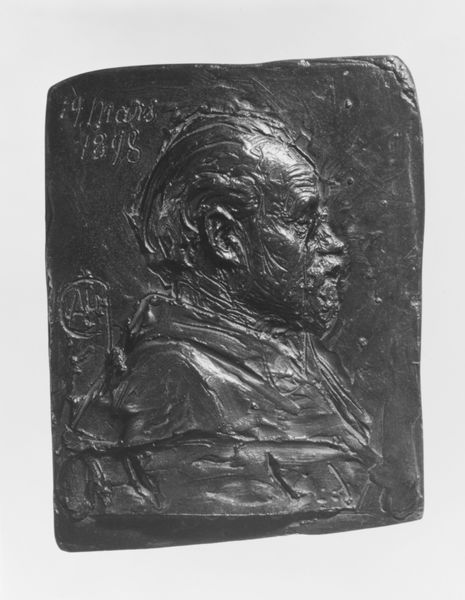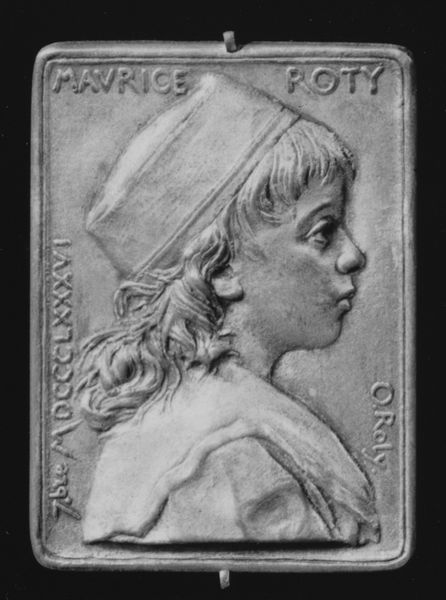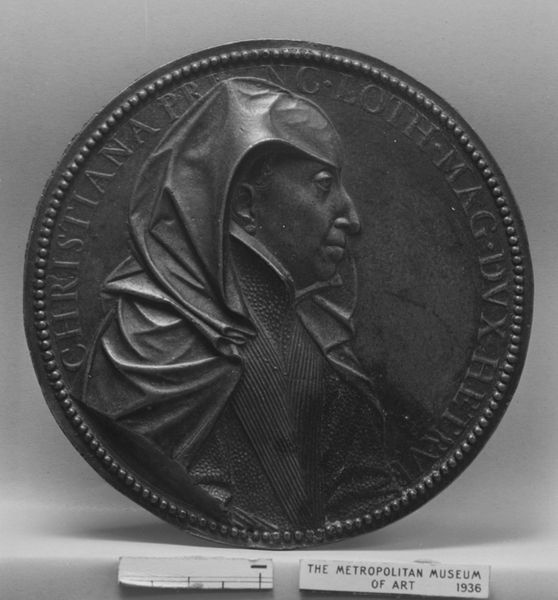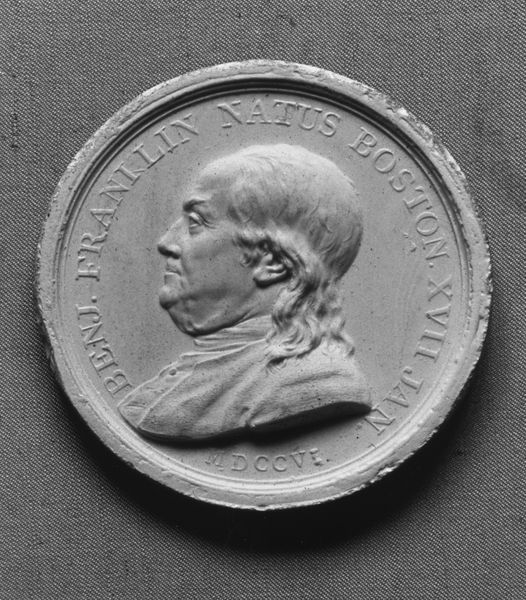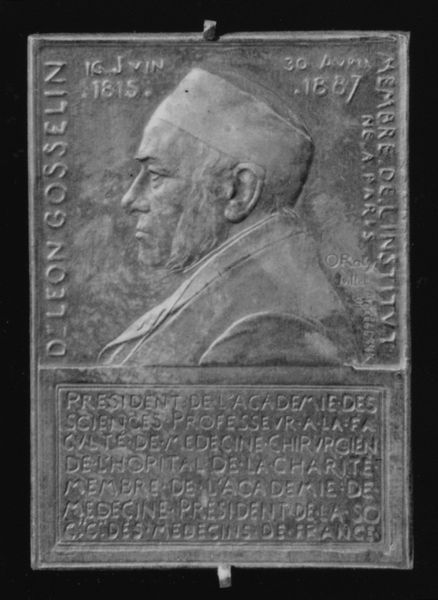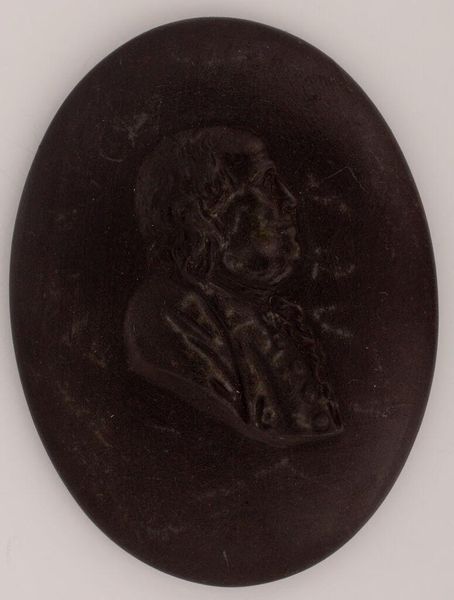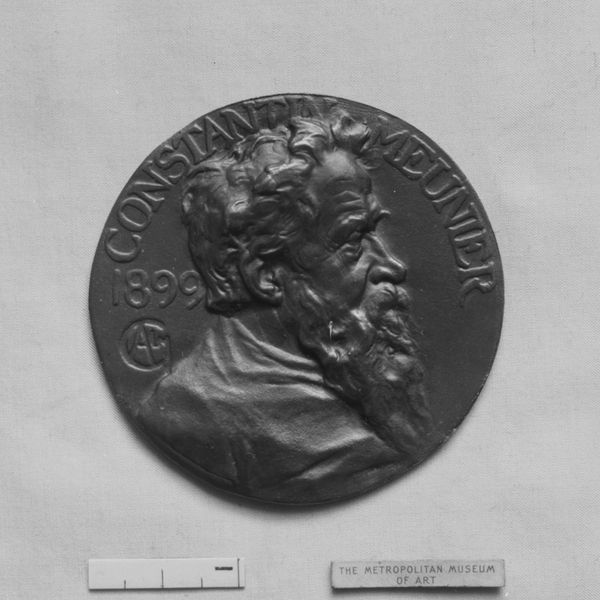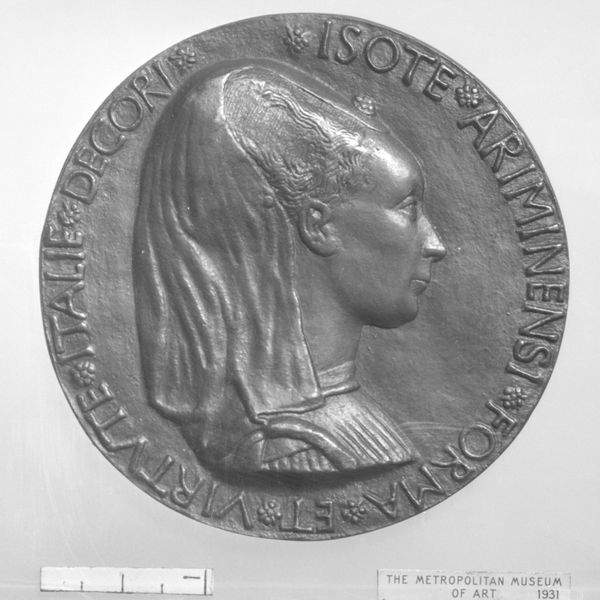
relief, sculpture
#
portrait
#
art-nouveau
#
sculpture
#
relief
#
figuration
#
sculpture
#
decorative-art
Dimensions: 4 5/16 × 2 7/8 in. (11 × 7.3 cm)
Copyright: Public Domain
Curator: Alexandre-Louis-Marie Charpentier's bronze relief, "Therese," created between 1885 and 1899, strikes me as so deeply intimate. The profile of the girl is arresting, the low relief lends an incredible softness to the portrait. What's your initial impression? Editor: It feels melancholic. There's a gravity to her expression, a quiet dignity, and the bronze gives it this almost antique weight. Curator: The Art Nouveau period was heavily invested in idealized beauty, and simultaneously interested in childhood and femininity. How do you feel this relief participates in this dynamic, and potentially resists it? Editor: Those trailing floral motifs woven into her hair… flowers can speak to cycles of life, of innocence blossoming, and, of course, fading. There's that poignant symbolism too, this memento mori in youth. But is this "Therese" simply a passive object of beauty? The slight upward tilt of her chin suggests some sense of agency, of individual spirit. It disrupts pure idealization, no? Curator: Absolutely. I wonder about the social context of portraiture during that time, though. Portraits, especially those of young girls, were often commissioned to reflect not just beauty, but also the status of the family, potentially enforcing a certain social performativity and control on feminine identity. This image could potentially be seen as a counterpoint to conventional norms? Editor: That's a compelling angle. The downturned mouth speaks volumes against that imposed control, the silent protest conveyed through this symbolism, where her inner life becomes almost a rebellion against social expectations. The shadow play accentuates the solemn contours of the piece, hinting at a hidden interior world beneath. Curator: Her gaze isn't directed outward; it's turned inward. This interiority becomes significant. Thank you; that adds so many layers to consider, thinking of Therese not only as an individual but also as a symbol of emerging female consciousness. Editor: A fascinating intersection, how artistic representation and individual presence meet to reflect culture.
Comments
No comments
Be the first to comment and join the conversation on the ultimate creative platform.
